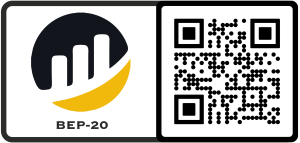Essentially, medical chatbots should have a set of distinctive capabilities to ensure the required service level and accuracy, which is critical to the industry. These features may include voice assistance, a knowledge center, appointment scheduling, a 24/7 presence, and much more. Although there are a variety of techniques for the development of chatbots, the general layout is relatively straightforward. First, the user makes a request, in text or speech format, which is received and interpreted by the chatbot. From there, the processed information could be remembered, or more details could be requested for clarification. After the request is understood, the requested actions are performed, and the data of interest are retrieved from the database or external sources [15].
Medical knowledge keeps expanding, and healthcare professionals need to be aware of every change. A proper understanding of technology and treatment changes is essential to providing quality care. This becomes important, especially when healthcare practitioners are dealing with pregnant and breastfeeding women.
healthcare marketing trends to acquire new patients for 2023
Various examples of current chatbots provided below will illustrate their ability to tackle the triple aim of health care. The specific use case of chatbots in oncology with examples of actual products and proposed designs are outlined in Table 1. These categories are not exclusive, as chatbots may possess multiple characteristics, making the process more variable.
- Common people are not medically trained for understanding the extremity of their diseases.
- Then the bot identifies the intent behind the keyword and provides a response.
- The platform’s web version will enable them to shoot videos/photos using a webcam.
- It can even assist your doctors in answering questions and prescribing the necessary drugs, dosage, and refills in real-time more efficiently.
- To make conversational interfaces even more vernacular, businesses are now using voice-based chatbots or voice bots.
- They can be expensive, so you should consider the price and make sure it fits your budget.
Dr. Liji Thomas is an OB-GYN, who graduated from the Government Medical College, University of Calicut, Kerala, in 2001. Liji practiced as a full-time consultant in obstetrics/gynecology in a private hospital for a few years following her graduation. Moreover, training is essential for AI to succeed, which entails the collection of new information as new scenarios arise. However, this may involve the passing on of private data, medical or financial, to the chatbot, which stores it somewhere in the digital world.
Increased costs
Founded by a team of doctors and computer scientists in 2014, Buoy Health’s is trained to assist patients in diagnosing their symptoms using an algorithm backed by real medical data. Our mission is to provide healthcare practitioners with the technology and support they need to unlock better healthcare for every patient. That’s why we’re developing an integrated system to serve as the backbone of medical practice success.
As a result, the clinic staff can quickly access patients’ vital signs and health status. The chatbots can use the information and assist the patients in identifying the illness responsible for their symptoms based on the pre-fetched inputs. The patient can decide what level of therapies and medications are required using an interactive bot and the data it provides. Large-scale healthcare data, including disease symptoms, diagnoses, indicators, and potential therapies, are used to train chatbot algorithms. Chatbots for healthcare are regularly trained using public datasets, such as Wisconsin Breast Cancer Diagnosis and COVIDx for COVID-19 diagnosis (WBCD).
Advantages of Healthcare Chatbots
That happens with chatbots that strive to help on all fronts and lack access to consolidated, specialized databases. Plus, a chatbot in the medical field should fully comply with the HIPAA regulation. Another point to consider is whether your medical chatbot will be integrated with existing software metadialog.com systems and applications like EHR, telemedicine platform, etc. The NLU is the library for natural language understanding that does the intent classification and entity extraction from the user input. This breaks down the user input for the chatbot to understand the user’s intent and context.
Where are chatbots used in healthcare?
Chatbots for healthcare allow patients to communicate with specialists using traditional methods, including phone calls, video calls, messages, and emails. By doing this, engagement is increased, and medical personnel have more time and opportunity to concentrate on patients who need it more.
A chatbot is an advanced computer program that uses Natural Language Processing (NLP) to understand and answer users’ questions. Through voice or text, a chatbot is capable of simulating human-like conversations and sharing prompt information to end-users. In the past decade, I’ve seen a surge in the popularity of chatbots in healthcare products. Healthcare organizations who already have a product want to integrate chatbots in their product expansion strategy. Startup founders who are planning to launch think of chatbots as an obvious feature to start with.
Data Safety
At Kommunicate, we are envisioning a world-beating customer support solution to empower the new era of customer support. We would love to have you onboard to have a first-hand experience of Kommunicate. Case in point, Navia Life Care uses an AI-enabled voice assistant for its doctors. It is HIPAA compliant and can collect and maintain patient medical records with utmost privacy and security. Doctors simply have to pull up these records with a few clicks, and they have the entire patient history mapped out in front of them. Earlier, this involved folks calling hospitals and clinics, which was fine.
What are NLP chatbots?
Essentially, NLP is the specific type of artificial intelligence used in chatbots. NLP stands for Natural Language Processing. It's the technology that allows chatbots to communicate with people in their own language. In other words, it's what makes a chatbot feel human.
Some bots are even equipped to conduct CBT (cognitive behavior therapy) to some extent. Doctors try their best to be available to their patients, but under certain circumstances, they might not be able to dedicate enough attention to each of their patients. Leave us your details and explore the full potential of our future collaboration.
Recommendation of health and wellness programs
You may find more information on our software engineering expertise in our portfolio . Choosing the right chatbot technology in healthcare is crucial for your customer communication. First of all, let’s find out the difference between the two most common chatbot technology types. The doctor appointment chatbot simplifies the patient’s process; without the need to call, wait for an answer, and communicate with a clinician, a person saves significant time and stress. This doesn’t mean that the usual forms of registration such as the Internet, mobile apps, or call centers are no longer available.
- These chatbots are not meant to replace licensed mental health professionals but rather complement their work.
- An appointment system is yet another potential use for healthcare chatbots.
- Healthcare chatbots are transforming modern medicine as we know it, from round-the-clock availability to bridging the gap between doctors and patients regardless of patient volumes.
- The China-based startup Emotibot is working to develop bots capable of detecting the current emotions of the customer and responding accordingly.
- Finally, AI chatbots are like superheroes for healthcare; they can handle a ton of patient questions and requests, which means less waiting and better access to care for everyone.
- In summary, AI chatbots can aid healthcare providers in delivering better care while improving operational efficiency.
Recently the World Health Organization (WHO) partnered with Ratuken Viber, a messaging app, to develop an interactive chatbot that can provide accurate information about COVID-19 in multiple languages. With this conversational AI, WHO can reach up to 1 billion people across the globe in their native languages via mobile devices at any time of the day. As long as your chatbot will be collecting PHI and sharing it with a covered entity, such as healthcare providers, insurance companies, and HMOs, it must be HIPAA-compliant.
Collecting Patient Data and Feedback
The chatbot will ask the patient a series of questions, such as the reason for the visit, and then use that information to schedule an appointment. It can save time for both patients and medical professionals and helps to reduce no-shows by sending reminders to patients. This is also used to remind patients about their medications or necessary vaccinations (e.g. flu shot).

Chatbots can ask patients simple questions to collect essential data like their names, symptoms, medication history, and insurance details. A rule-based communication bot is governed by a decision tree, which maps out the conversation. Anticipate what a user might ask and prepare detailed answers to the questions while building such a tool.
What type of model is a chatbot?
Presentation. This work tries to reproduce the results of A Neural Conversational Model (aka the Google chatbot). It uses a RNN (seq2seq model) for sentence predictions.





